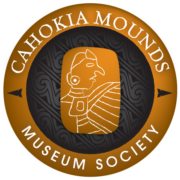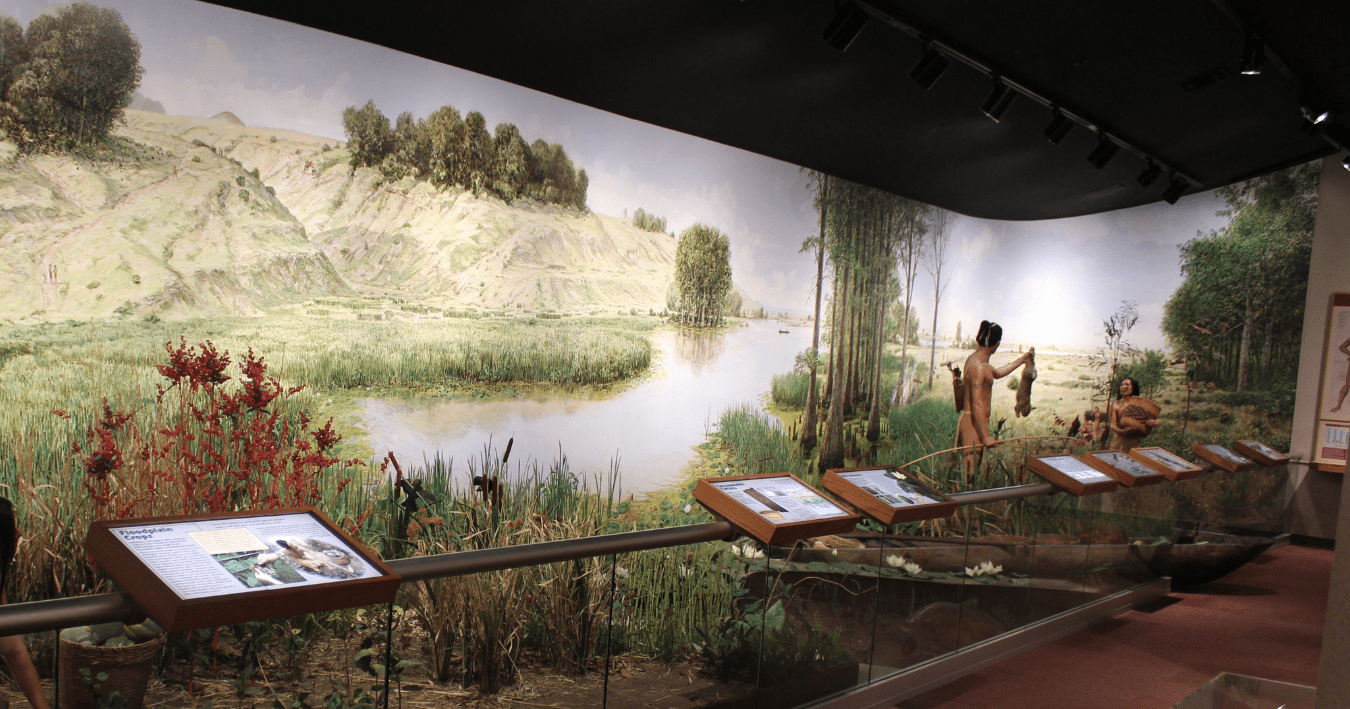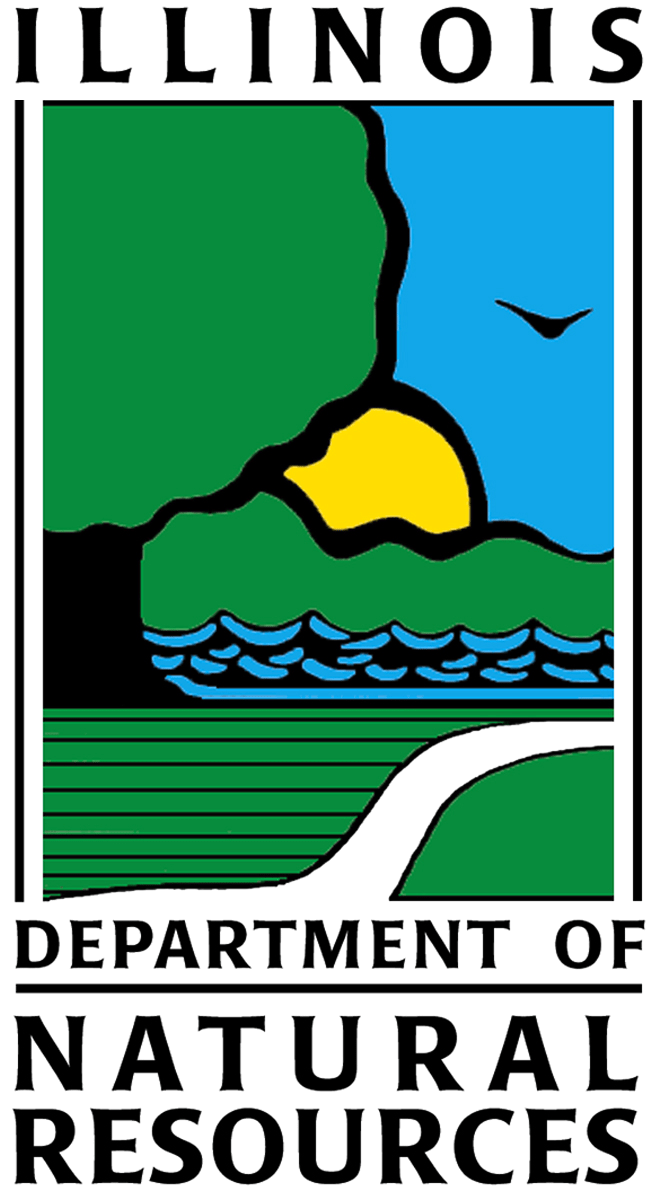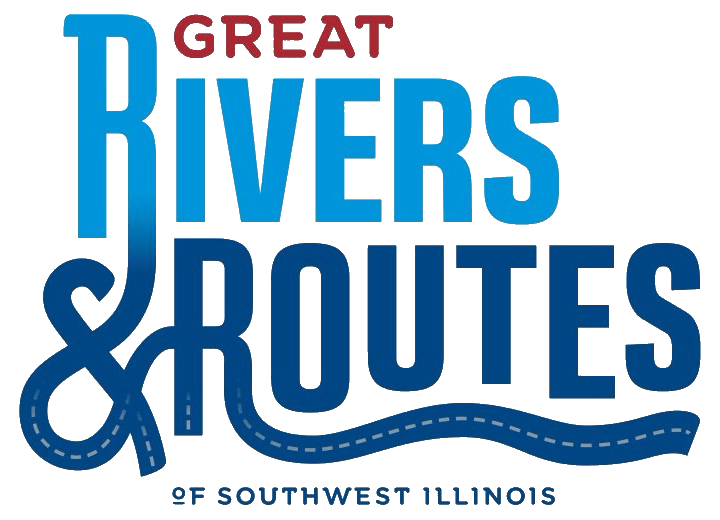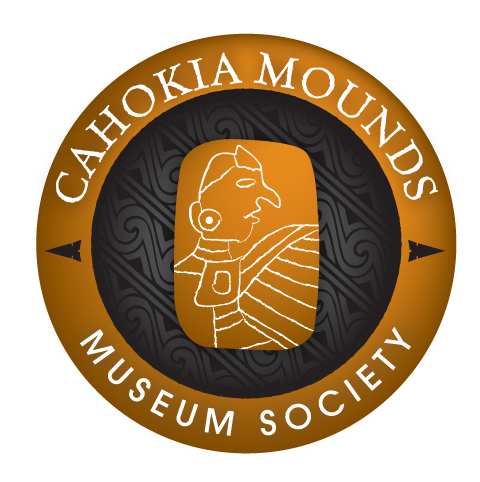Were there Domesticated Dogs at Cahokia?…. Where did Cahokians get Fresh Water?
Q & A: By Bill Iseminger, Archaeologist
Q: Were There Domesticated Dogs at Cahokia?
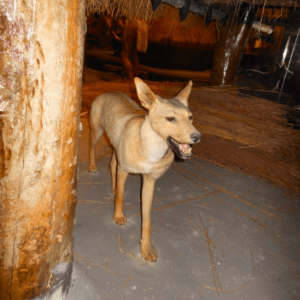
Dog Display in Interpretive Center. Photo Courtesy of Cahokia Mounds State Historic Site.
A: Yes, we have found dog burials and dog remains associated with a variety of features at Cahokia. Notably, there was a dog burial found on the 4th Terrace of Monks Mound during excavations by Washington University. The burial was in front of the large structure that stood on the summit of the mound and it was accompanied by some miniature pots that held red ochre. So, was this a pet of one of Cahokia’s leaders, or was it sacrificed in some ritual? We will never know for sure.
During the East Stockade excavations in the 1970s, dog burials were encountered. One was a fully intact dog skeleton placed in a pit, suggesting it was probably a family pet. Another was intact except it was missing its skull—so why was it decapitated? Had it raided some food storage and thus “punished?”Or was the skull used for some other purpose? Again we will never know for sure.
DNA studies show that dogs are descended from wolves and were first domesticated in Eurasia well over 20,000 years ago, so domesticated dogs would have accompanied the early PaleoIndians as they traversed the Bering Land Bridge into the Americas. Some of the oldest dated dog skeletons in America are from the Koster and Stilwell sites in the Illinois River Valley, once thought to be about 9500 years old but were recently re-dated to well over 10,000 years old.
Dogs would have served several purposes: as family pets, scavengers of food scraps and refuse in the residential areas, and possibly as guard dogs; they would have been hunting companions, stalking and flushing out animals for the hunters; and, occasionally, they were a food source themselves, as scattered bones have been found in refuse pits, perhaps providing a meal when other sources were scarce.
Q: Where did the Cahokian get Fresh Water?
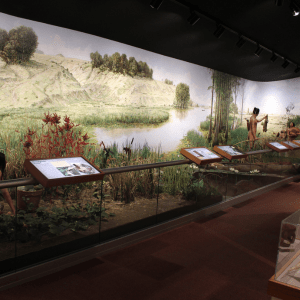
Wetlands & Waterways Exhibit – Cahokia Mounds Interpretive Center. Photo Courtesy of Cahokia Mounds State Historic Site.
A: The Cahokia site is situated at the confluence of two streams that emerged from the eastern uplands. Canteen Creek joined Cahokia Creek just northeast of Monks Mound and most of the early settlement of Cahokia was along these streams. As flowing streams, they would have provided the bulk of the fresh water for the Cahokians. Horseshoe Lake to the north of the site would also have been a source for those living in that area, as would other smaller lakes that had formed in old river meanders. The many borrow pits around the Cahokia site, where soil was excavated for mound construction, often filled with water but it would have been stagnant and polluted by runoff from the village areas so most of the time it was not suitable for drinking, but possibly could be used for cooking. It is also likely that rainwater was collected in ceramic vessels to supplement the fresh water sources.

